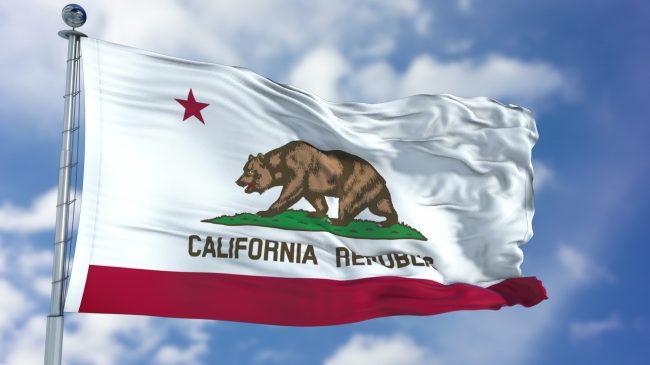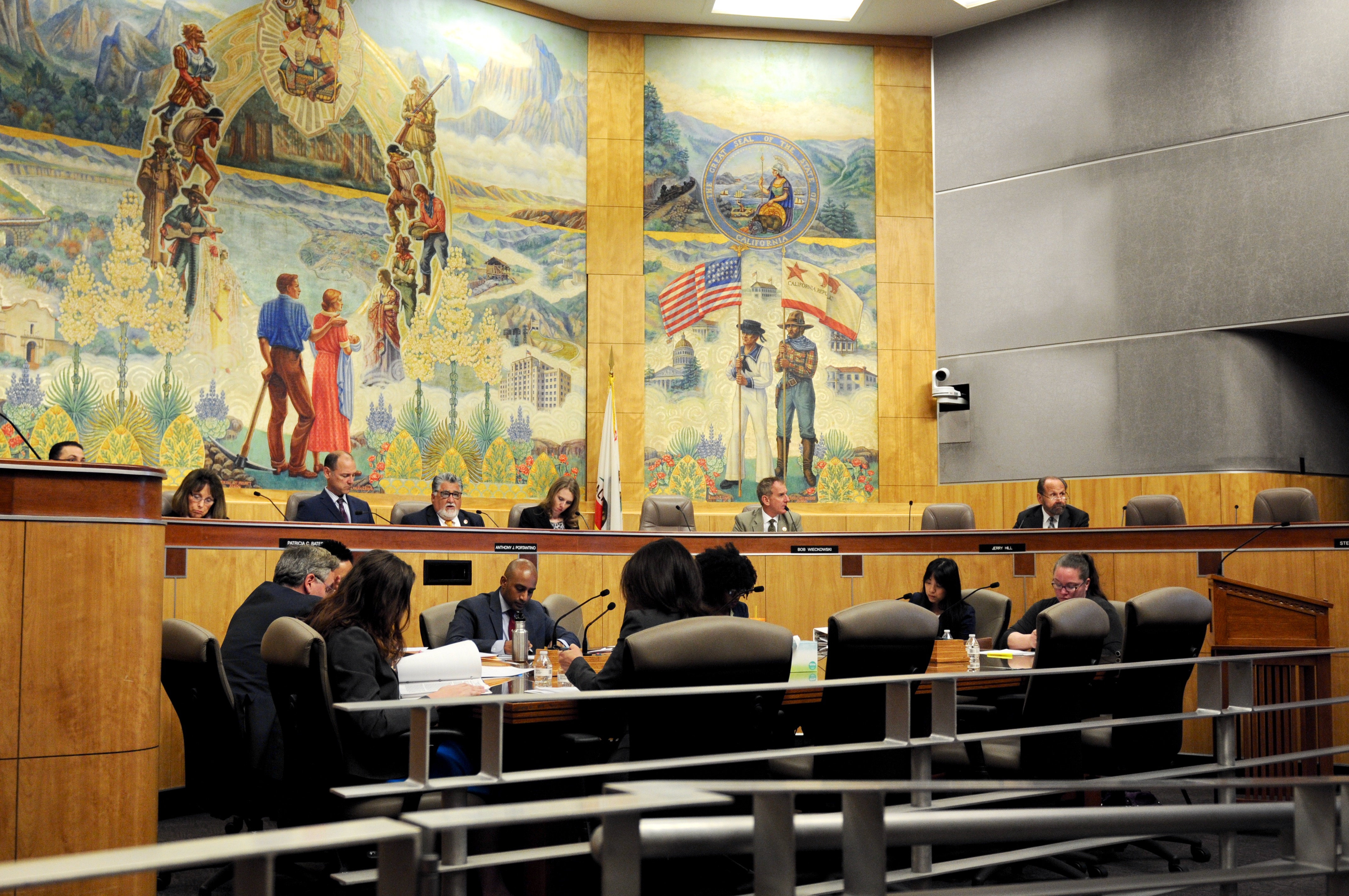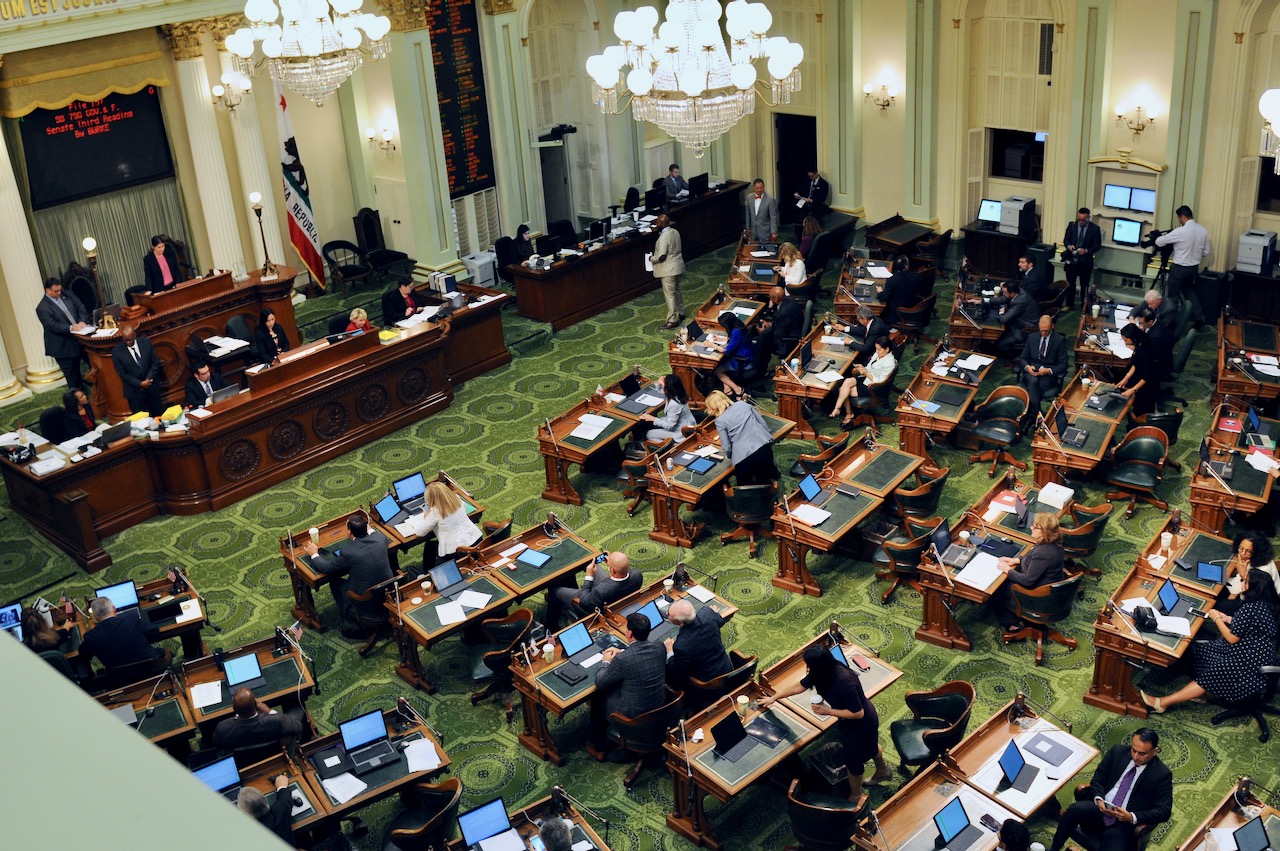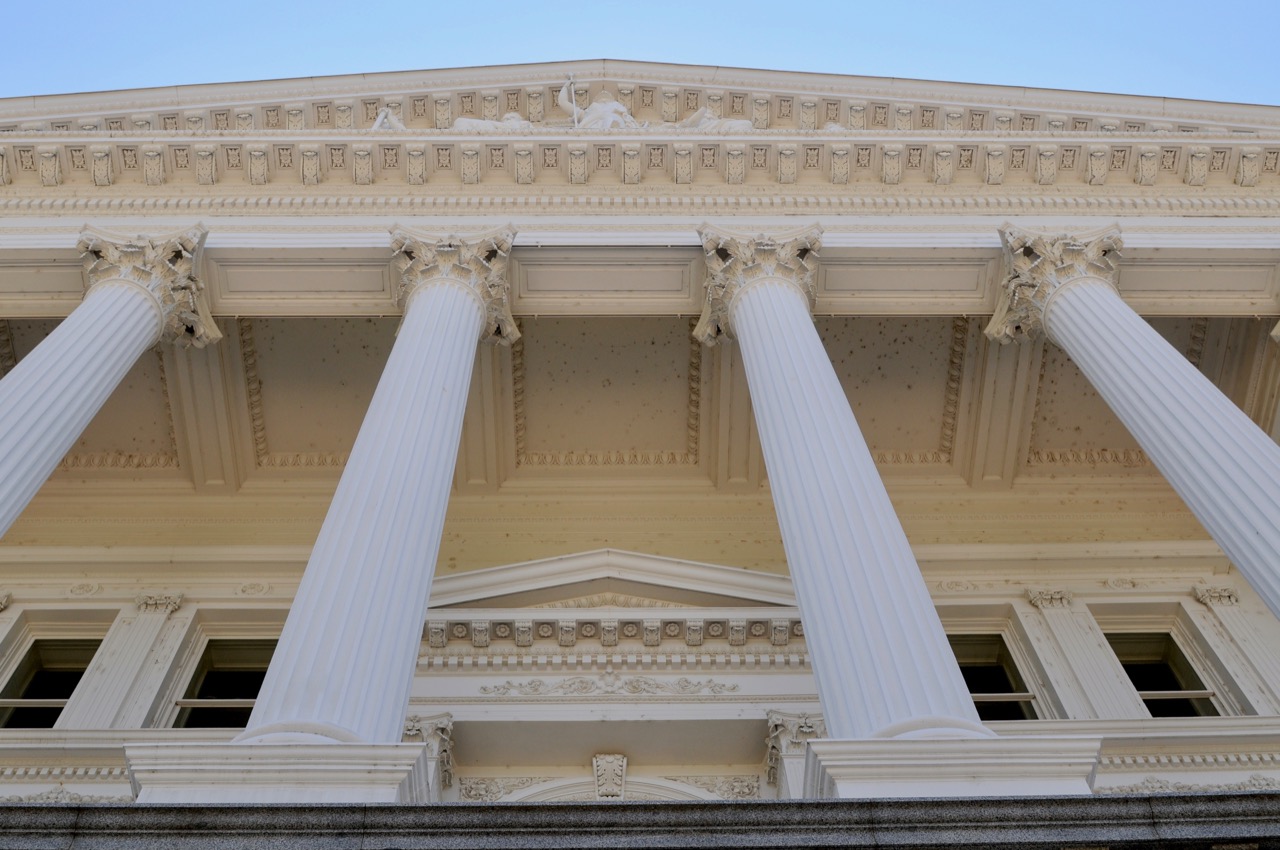
California Bear Flag. (Photo: ca.gov)
Other Types of Lobbying
Cajoling the general public to get involved in the legislative or regulatory processes
By Chris Micheli, February 9, 2020 6:03 am
Although most lobbying occurs in the legislative and regulatory arenas generally, there are several other types of lobbying such as grassroots lobbying, as well as advocacy before specific state agencies that often have unique rules and procedures for lobbying those entities. This article briefly discusses grassroots lobbying, as well as a few of those specialized state bodies that lobbyists should be aware of.
Grassroots Lobbying
Grassroots lobbying is sometime referred to as “indirect lobbying,” as opposed to “direct lobbying” that is conducted by lobbyists and industry specific groups and individuals in the State Capitol. Grassroots lobbying involves members of the general public, as opposed to those who are directly impacted by a particular bill or issue. In essence, those involved in grassroots lobbying are those you attempt to get the general public to contact their elected officials so that members of the public are lobbying decision-makers.
Those involved in grassroots lobbying intend to influence decision-makers by cajoling the general public to get involved in the legislative or regulatory processes. This type of lobbying requires educating large groups of individuals and then mobilizing them in a “call to action.” It usually involves efforts to get specific organizations or community groups to become involved in the efforts to pass or defeat legislation or regulations.
Educating the general public can take multiple forms, such as direct mailing, social media, paid or free media, press conferences and releases, etc. Outreach efforts are key to successful grassroots lobbying and the media often play a critical role in that outreach effort. But it first begins with educational efforts so that the general public understands the issue or bill.
Mobilizing the general public is the effort to get the members of the public to act in the desired manner. Whether this results in making phone calls or writing letters to elected officials, boycotting a business, or demonstrating at the State Capitol, there are multiple forms that grassroots lobbying can take. It depends largely on the audience and what is intended to be accomplished that usually determines the outreach efforts.
In addition to the news media, the use of social media has become more prevalent in grassroots lobbying. The potential reach of the Internet and web sites is much larger than traditional forms of media. This is an easy communication tool that enables organizing and interacting with those on social media. And the ability to grow your potential group of supporters is greatly assisted by those who have a social media presence. It can also be a much less costly form of organizing.
In addition to the general public, many large businesses undertake their own forms of grassroots lobbying. Some refer to this as an “action plan” in which employees of the large business are asked to participate in the lobbying efforts by contacting their local elected officials by telephone or letter usually, although sometimes this occurs with personal visits. As such, these businesses can form a strong perception that there is local support for the company’s position among elected officials.
Lobbying Specialized Agencies
Some of the state agencies that have specialized lobbying rules and procedures include the Public Utilities Commission (PUC), the California Coastal Commission (CCC), and the California Air Resources Board (CARB).
In general, a lobbyist is one who is paid to communicate with officials for the purpose of influencing legislative or administrative action. Under the Government Code, a proceeding before the Public Utilities Commission constitutes “administrative action” if it meets any of the definitions set forth in statute. However, a communication made for the purpose of influencing this type of PUC proceeding is not within that definition of a lobbyist if the communication is made at a public hearing, public workshop or other public forum that is part of the proceeding, or if the communication is included in the official record of the proceeding.
In addition, the PUC has other unique rules, such as Rule 22b that states, “[a]n electrical corporation that does not intend to lobby or market against any community choice aggregation program shall file a Tier 1 advice letter no later than March 31, 2013, stating that it does not intend to engage in any such lobbying or marketing.”
In other rules about PUC lobbying, state law bars oral communications on the eve of a vote in rate-setting cases. It also requires the decision-maker to disclose any ex parte communications in adjudication or rate-setting cases, and it clarifies that investor representatives are covered by these same ex parte rules.
Other agencies, such as the California Coastal Commission and the California Air Resources Board, do not have rules about lobbying, but do about ex parte communications. While there are limitations on such communications with CARB members, there has been prior, unsuccessful legislation that would require interest groups seeking to influence members of the Coastal Commission to disclose the use and payment of professional lobbyists.
It is important for lobbyists to be aware of rules regulating their conduct when lobbying different state agencies and departments. These rules need to be reviewed prior to any activity and then, of course, followed to ensure proper compliance with them. Otherwise, both the lobbyist and his or her client could be adversely impacted.
- Confidential Marriages in California - July 10, 2025
- Emergency Protective Orders in California - July 9, 2025
- Recreational Marinas in California - July 8, 2025







